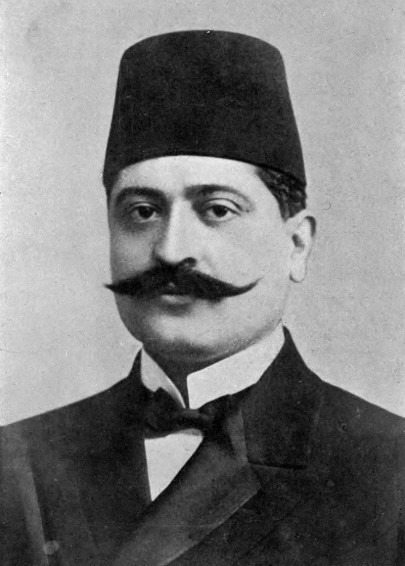Introduction to Artificial Intelligence: A Brief History

Although Artificial Intelligence or AI seems like a new word, it isn't new technology for researchers. This tech is much older than a normal person would imagine. The history of AI may feel like a dense and impenetrable subject for people who aren't familiar with Computer Science and its subsets.
However, despite how mysterious and untouchable AI may seem, when broken down, it becomes a lot easier to understand. In this article, we will take you through the milestones in the history of AI, so you can have a better understanding of the journey of AI from its generation to till date development. If you want to read more updates about modern technology, just visit https://techktimes.com/.
Let's get started.
What is Artificial Intelligence?
AI or Artificial Intelligence is a subset of Computer Science that focuses on machine learning, machine-driven intelligence, and various other related terms. In short, it deals with the study of non-human intelligence.
In layman’s terms, we can say that AI is the field of study that focuses on developing computer systems that are able to perform tasks, which normally require human intelligence such as profanity filtering in communications. Today, AI is also applied in practical ways, from self-driving cars to smart climate control systems that automatically adjust environments for comfort and energy efficiency. According to the field of Artificial Intelligence, human cognitive processes have the ability to both be replicated and mechanized by highly intelligent machines.
History of Artificial Intelligence
The 1950s – The Beginning of AI.
The 1950s proved to be the era when many advances in the field of AI came to fruition by various computer scientists and others. Claude Shannon, also known as the father of Information Theory, published Programming a Computer for Playing Chess that marked the beginning of AI. Today, anyone can easily experience the power of AI by choosing to play chess vs computer online, just like the early experiments that inspired modern machine learning. In this article, he discussed the development of a chess-playing computer program.
In addition to that, Alan Turing also published an article Computing Machinery and Intelligence that proposed the idea of The Imitation Game. This proposal later became The Turing Test, which measured artificial intelligence. This test measured the ability of a machine to think like a human.
1952
A computer scientist named Arthur Samuel developed a checkers-playing computer program. It was the first program that could actually learn how to play a game.
1955
The term Artificial Intelligence was introduced by one of the founding fathers of this field of study, John McCarthy. John, along with his team, created a proposal for a workshop on "artificial intelligence". When the workshop took place in 1955, the official birth of the term AI was attributed to John McCarthy.
Moreover, three people named Allen Newell (researcher), Cliff Shaw (programmer), and Herbert Simon (economist) co-authored Logic Theorist the same year. It was known as the first AI computer program.
1958
LISP programming language was developed by John McCarthy, which is known as the most popular and highly favored language for the research of Artificial Intelligence.
1959
The term machine learning was introduced by Samuel when he was speaking about programming a computer to play a game of chess, and that too way better than the person who actually programmed it.
The 1960s – Rapid Growth in AI
The 1960s saw a rapid growth of Artificial Intelligence in the form of new programming languages, advanced research studies, as well as robots and automatons. In addition to that, films were made that depicted artificially intelligent beings. All this heavily highlighted the importance of AI in that era.
1961
An industrial robot named Unimate, made by George Devol in the 1950s became the first-ever intelligent machine to work on a General Motors assembly line in New Jersey. The work it did include transporting die castings from the assembly line as well as welding various parts on to cars. This was the task that was a bit dangerous for humans to do. However, it was done excellently by Unimate without human intervention.
Furthermore, another computer scientist, James Slagle, developed Symbolic Automatic INTegrator (SAINT) in 1961, which was a heuristic problem-solving program. Its major purpose was to perform symbolic integration in freshman calculus.
1964
A computer scientist named Daniel Bobrow created an early AI program written in LISP known as STUDENT. This program was meant to solve algebra word problems. This AI-based program is cited as an early milestone of Artificial Intelligence natural language processing.
1965
ELIZA, an interactive computer program based on AI, was developed in 1965 by Joseph Weizenbaum, a computer scientist and professor. This intelligent program could functionally have a conversation in English with a person.
Joseph's purpose for designing this program was to demonstrate how an artificially intelligent mind communicates with a human mind.
1966
Charles Rosen with a team of 11 others, developed the first general-purpose mobile robot, known as Shakey the Robot or first electronic person.
1968
The first sci-fi movie to feature AI, 2001: A Space Odyssey, was released in the year 1968. The movie features a sentient computer, called HAL (Heuristically programmed ALgorithmic computer). HAL is shown communicating with the crew members and controlling the spacecraft's systems quite efficiently. Everyone conversed with HAL as if it were human until it malfunctions, and starts interacting in a negative manner.
The 1970s – More Advancements in AI
Like the previous decade, the 1970s opened new paths for accelerated advancements that focused on robots and automatons. However, the only downside was that AI has to face several challenges, such as low government support for research of AI.
1970
The first anthropomorphic robot was built in Japan at Waseda University, called WABOT -1. It was able to move its limbs, see, and converse like a human.
1977
The ever-favorite Star Wars was released in 1977, directed by George Lucas. The film featured a humanoid robot called C-3PO who was designed as a protocol robot. It was fluent in over seven million forms of communication.
In addition to C-3PO, R2-D2 was also introduced in the film. It was a small, astromech droid who was incapable of human speech. Unlike C-3PO, R2-D2 communicated with electronic beeps. It was made to do small repairs and co-pilot starfighters.
1979
A mechanical engineering student, James L. Adams, created a TV-equipped mobile robot in the year 1979, called The Stanford Cart. The TV camera on the robot was added by Hans Moravec, who was a PhD student at that time. The bot was able to successfully cross a room with chairs, and that too without human interference. However, it took about 5 hours to do so.
The 1980s – A Period of AI Winter
This period is known as AI winter because of reduced funding and interest in Artificial intelligence. However, still, some advancements in the field of Artificial Intelligence were in the 80s.
1980
WABOT-2 was created at Waseda University, ten years after the WABOT-2. This bot was capable of communicating with people as well as reading musical scores and even playing music on an electric organ.
1981
$850 million were allocated by The Japanese Ministry of International Trade and Industry to the Fifth Generation Computer Project. The goal of this project was to develop artificially intelligent computers that could make conversations with humans, translate different languages, interpret pictures, and express human-like reasoning.
1986
The first-ever driverless van was built and released by Mercedes Benz under the direction of Ernst Dickmanns. The van was equipped with several cameras and sensors. It could drive at the speed of up to 55 miles per hour on an empty road with no other obstacles and human drivers.
1988
Rollo Carpenter, a computer programmer, developed a chatbot named Jabberwacky. Its goal was to simulate natural human chat in an interesting, entertaining, and humorous manner. The chatbot was based on AI.
The 1990s – Continued Growth in the Field of AI.
1995
Chatbot ALICE (Artificial Linguistic Internet Computer Entity) was developed by a Computer scientist named Richard Wallace. He was inspired by Weizenbaum's ELIZA. The only difference between these two bots was the addition of natural language sample data collection in ALICE.
1997
Two Computer scientists named Jürgen Schmidhuber and Sepp Hochreiter developed Long Short-Term Memory (LSTM). It was a type of recurrent neural network that could recognize handwriting and human speech.
The same year also marked the first-ever victory of a chess-playing computer, Deep Blue, which was developed by IBM. It won a chess game and a match against a chess world champion.
Machines winning from humans. What a day it was!
1998
The first pet toy robot for children named "Furby" was invented by Dave Hampton and Caleb Chung.
1999
In accordance with Furby, AIBO (Artificial Intelligence RoBOt) was introduced by Sony. It was a $2,000 robotic pet dog that could interact with its environment, owners, and other AIBOs. In addition to that, it was able to understand and respond to 100+ voice commands and have a conversation with its human owners.
2000-2010 – Trend of AI Increases in the New Millennium
The new millennium was the period of boom in AI. More and more artificially intelligent beings were created along with AI-based sci-fi movies.
2000
With the beginning of the new millennium, the Y2K problem, also known as the Year 2000 Problem, took place. It was a class of computer errors that were related to the formatting and storage of electronic calendar data beginning on 01/01/2000. As all the previous automated systems only had to change the last two digits of the year; now, it had to switch all four digits, which output nothing but bugs.
The time was indeed a challenge for technology and those who used it.
However, despite the tough time, Kismet was developed by Professor Cynthia Breazeal. It was a robot that could recognize and simulate emotions with its face. It was made to look like a human being with eyes, eyelids, lips, and eyebrows.
2002
Roomba, an autonomous robot vacuum, was invented and released by iRobot. The artificially intelligent robot vacuum was able to clean surfaces while avoiding obstacles.
2004
One of the biggest milestones since the beginning of AI was achieved when NASA's robotic exploration rovers Spirit and Opportunity on the surface of Mars without any human intervention. This was the time when the AI game started changing the world.
2006
The term "machine reading" was coined by Oren Etzioni (computer science professor) and two computer scientists named Michele Banko and Michael Cafarella.
2007
ImageNet was assembled by a computer science professor Fei Fei Li and his colleagues. The purpose of this database of annotated images was to aid in object recognition software research.
2009
A driverless car was secretly developed by Google in 2009, but it didn't pass Nevada's self-driving test until the year 2014.
2010 to Present Day – The Period of AI. Innovation
The concept that AI is only confined to robots and machines started to change as artificial intelligence was being embedded in our day-to-day existence. From smartphones having voice assistants to computers having intelligent functions, AI started becoming more common day by day.
2010
ImageNet Large Scale Visual Recognition Challenge (ILSVRC) was launched by ImageNet. It was an annual challenge in which various AI algorithms are evaluated for object detection and image classification at a large scale.
If you have owned an Xbox 360 in the past or are familiar with it, you must know about Kinect. Launched by Microsoft in 2010, Kinect was the first-ever gaming device that could track human body movement using a 3D camera and infrared detection.
2011
IBM created Watson, a natural language question-answering computer that defeated two former Jeopardy! champions in a televised game.
The same year, Apple also released a virtual assistant, Siri, on iOS. Siri is an artificially intelligent voice assistant that uses a natural-language user interface to infer, observe, answer, and then recommend things to its human users. It adapts to the voice commands of the users and provides an individualized experience to every user.
2014
Microsoft released their version of virtual assistant known as Crotona. It is similar to Apple's Siri.
The same year, Amazon also launched a home assistant that can listen to its user's voice commands. It is called Amazon Alexa and is developed into smart speakers that work as personal assistants.
2015
Three major names in the world of Science and Technology, Stephen Hawking, Elon Musk, and Steve Wozniak along with 3,000 other individuals, signed an open letter stating the ban on development and use of autonomous weapons.
2015-2017
Google developed and released DeepMind's AlphaGo, an artificially intelligent computer program that could play the board game Go. It also defeated various human champions.
2016
This AI invention took the world by storm. Sophia, a humanoid robot, was created by Hanson Robotics. She is also known as the first robot citizen. The features that distinguish Sophia from other humanoids is her likeness to an actual human being. She could see like humans (with the help of image recognition), make different facial expressions, and communicate with people through AI.
2016
Google Home was released by Google, which is a smart speaker that uses AI technology to act as your personal assistant. It helps users remember various tasks, create appointments instantly, and search for information via voice.
2017
Another record-breaking event happened in 2017 when two dialog agents or chatbots created by The Facebook Artificial Intelligence Research lab were trained to communicate with each other. They were to learn how to negotiate. Interestingly, as the two chatbots conversed, soon they invented their own language to communicate with each other.
2018
Alibaba's language processing AI beat human intellect at a Stanford reading and comprehension test. The artificially intelligent program scored 82.44 against 82.30 on a set of 100,000 questions. Quite close but still a victory!
Google Developed BERT and Samsung introduced Bixby, a virtual assistant.
Final Words – Future of Artificial Intelligence
From the early 1950s to the present date, the world of AI has seen a lot of advancements – and that too, at an unprecedented rate. That being said, it is quite clear that we can expect a lot more artificially intelligent computer programs and machines in the coming years. We can expect AI-based things like:
- Chatbots+ Smart Voice Assistants
- Advanced Natural Language Processing
- Machine Learning and Automatic Machine Learning
- Autonomous Vehicles
- Highly Smart Humanoids
With the evolution of technology and Artificial Intelligence, machines are taking over humans in several fields, including production chains and self-driving cars. The industrial revolution has indeed made a lot of advancements in business with the help of AI, and there is a long way to go.



